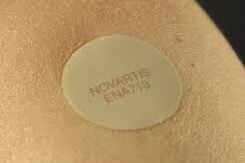🚀 Uptake: Slow Start, Steady Climb
Approved by the FDA in July 2023, Leqembi has been described as a breakthrough for treating early-stage Alzheimer’s. Yet the real-world rollout has been slower than expected. As of early 2024, only 1,725 Medicare beneficiaries had received the drug.
By 2025, global sales reached $107 million, with projections of $279 million by fiscal year-end—indicating growing but modest adoption.
🧑⚕️ Who’s Eligible?
Leqembi is indicated for individuals with mild cognitive impairment (MCI) or early Alzheimer’s dementia, confirmed to have amyloid buildup in the brain—typically verified through a PET scan or spinal fluid test.
💰 What Does It Cost the Average Medicare Beneficiary?
If you’re on traditional Medicare without Medigap or a premium supplemental plan, here’s what you can expect to pay:
💊 Drug Cost
- List price: $26,500/year
- Medicare Part B pays 80% after your $257 deductible
- Out-of-pocket coinsurance: ~$5,300/year
🧪 Associated Care Costs
| Service | Typical Annual Cost | You Pay (20%) |
|---|---|---|
| PET scan (amyloid confirmation) | $1,565 | $313 |
| Infusion center services | $2,566 | $513 |
| MRIs for safety monitoring | $1,068 | $214 |
| Neurology visits | $498 | $100 |
| Genetic testing (APOE) | $99 | $20 |
| Occasional extra MRIs | ~$83 | ~$17 |
| Rare hospital stays (ARIA-related) | ~$318 | ~$64 |
Total medical services: $1,327**
🧾 Estimated Annual Out-of-Pocket Cost
| Item | Cost |
|---|---|
| Drug coinsurance | ~$5,300 |
| Ancillary coinsurance | ~$1,327 |
| Medicare deductible | $257 |
| Total | ~$6,884 |
⚠️ Most Americans do carry some supplemental coverage—like Medigap or Medicaid—which can lower costs dramatically. But for those with only standard Medicare, nearly $7,000/year is a realistic burden.
🧪 What’s Slowing Broader Access?
- Infusion logistics: Biweekly IVs require specialized centers
- Diagnostics: PET scans and lumbar punctures aren’t widely accessible
- Safety protocols: Regular MRIs are needed to detect side effects
- Registry requirement: Medicare patients must be enrolled in a national database
🚀 What’s on the Horizon?
Leqembi’s developers, Eisai and Biogen, are introducing innovations that could streamline access:
- Monthly IV formulation already approved
- Autoinjector version under review, potentially eliminating infusion centers
- Blood-based tests may soon replace PET scans for eligibility
- The AHEAD 3-45 trial could expand use to preclinical patients by 2028
🔮 Will It Reach Everyone Who Needs It?
Experts anticipate peak annual sales between $6B–$10B by 2030, with millions of Americans potentially eligible. But for Leqembi to become standard care, we’ll need:
- Expanded infusion infrastructure
- Wider diagnostic access
- Streamlined safety monitoring
- Lower out-of-pocket costs and stronger coverage
🧠 Bottom Line
Leqembi is gaining momentum—but it’s not yet within reach for everyone. Without supplemental coverage, the average out-of-pocket cost sits near $6,900/year, creating a financial barrier that slows adoption. With innovation and policy shifts, though, this promising therapy could reshape how we treat Alzheimer’s in the years ahead.











